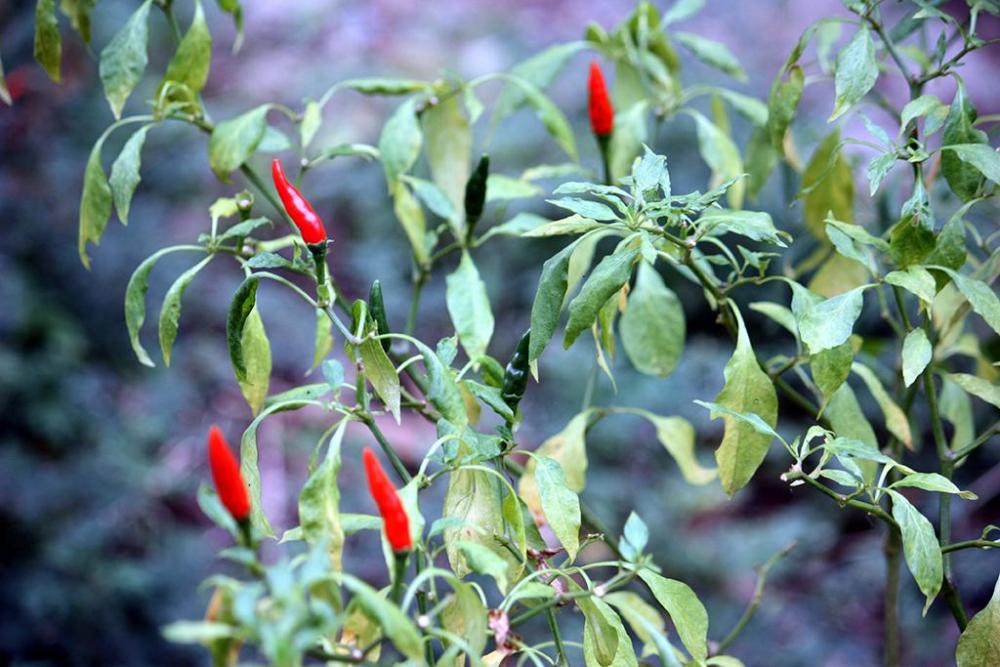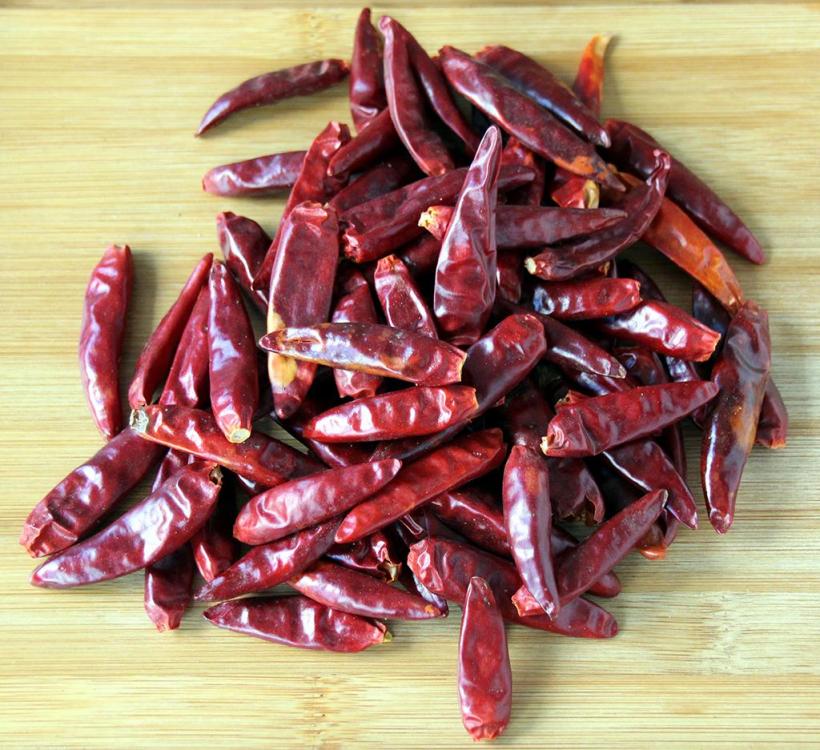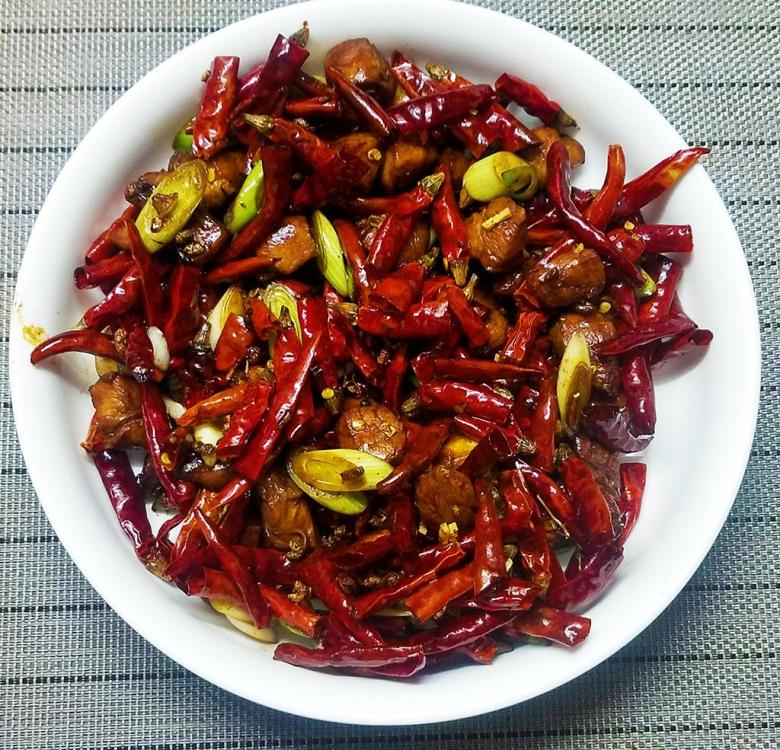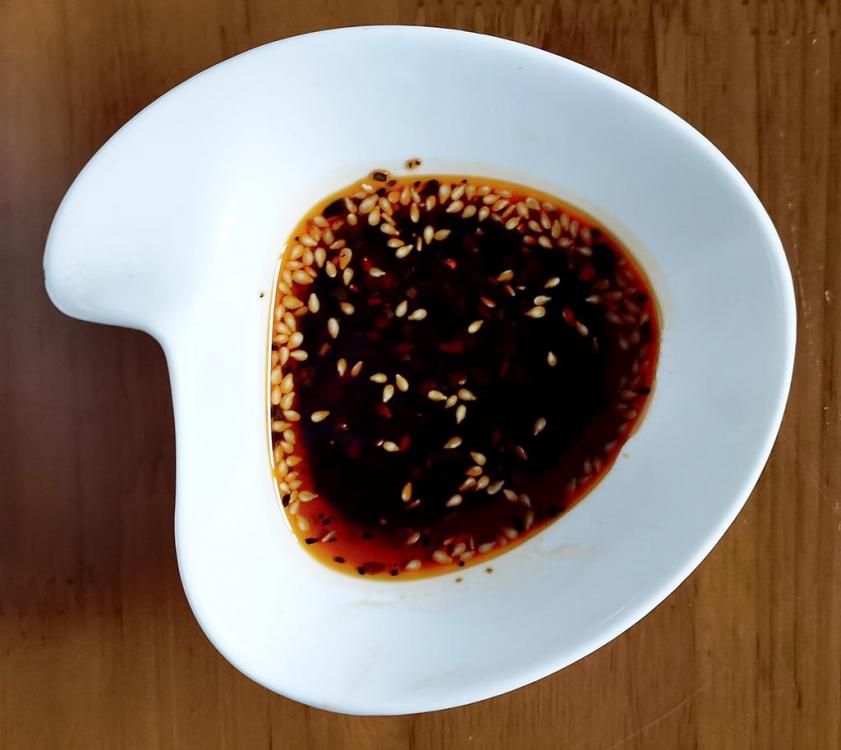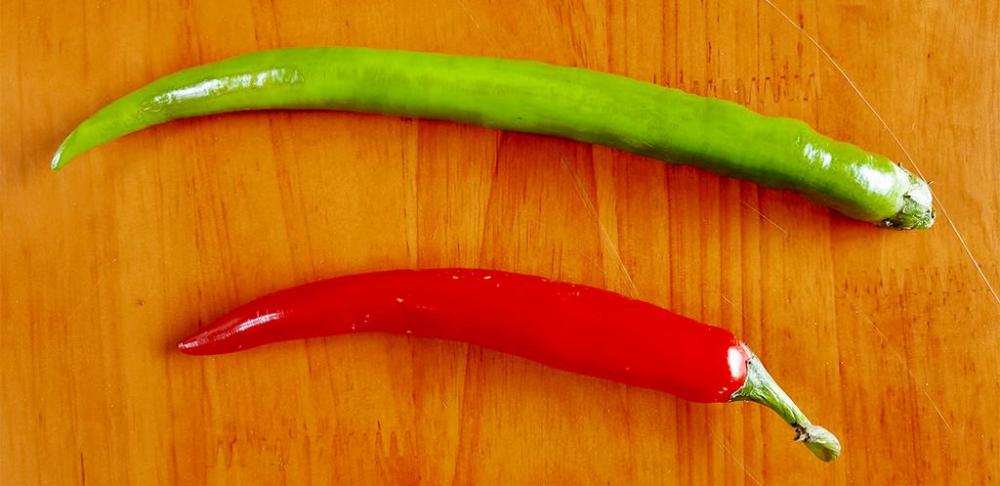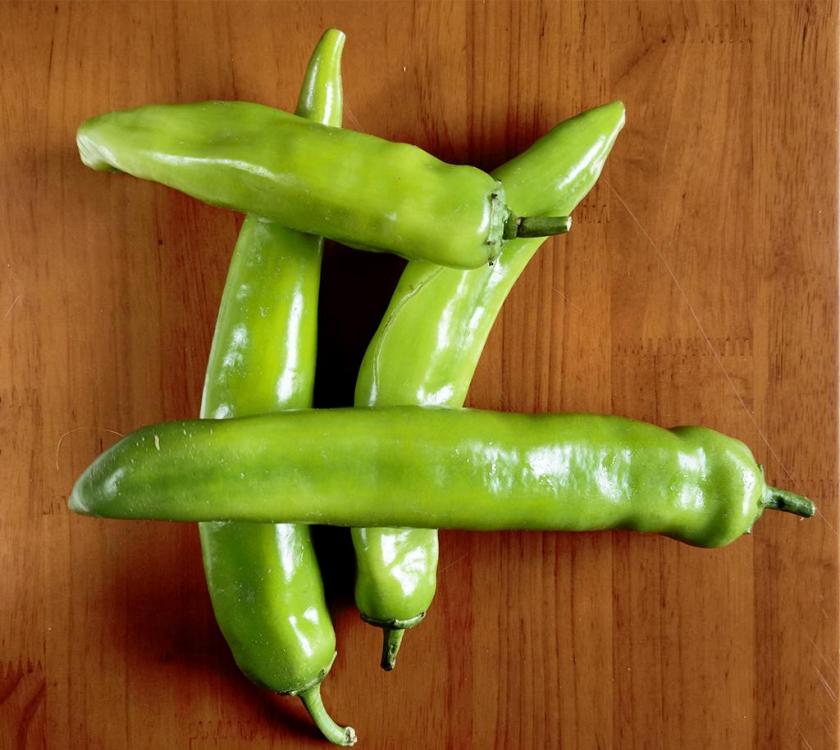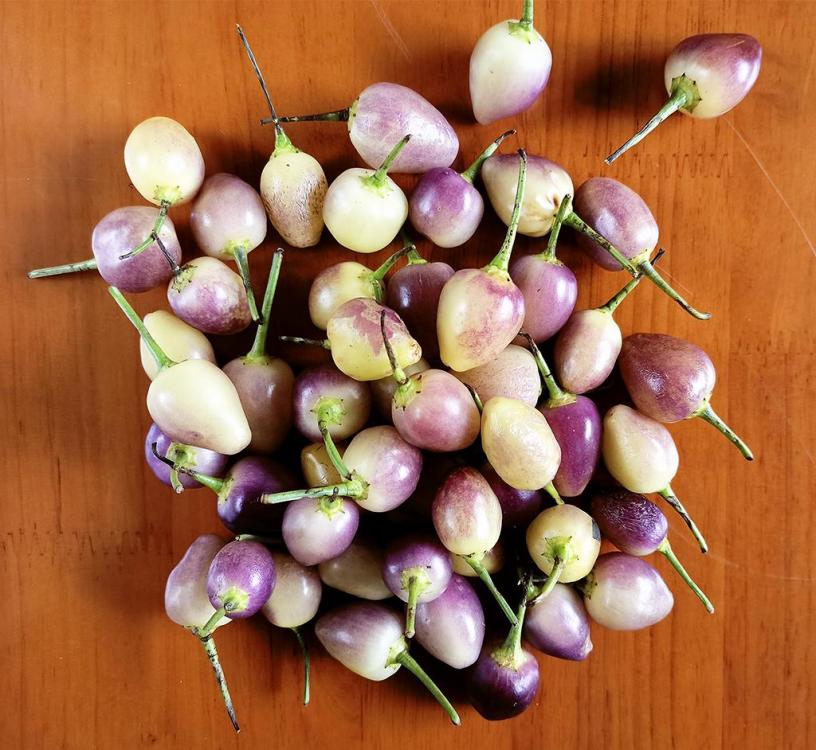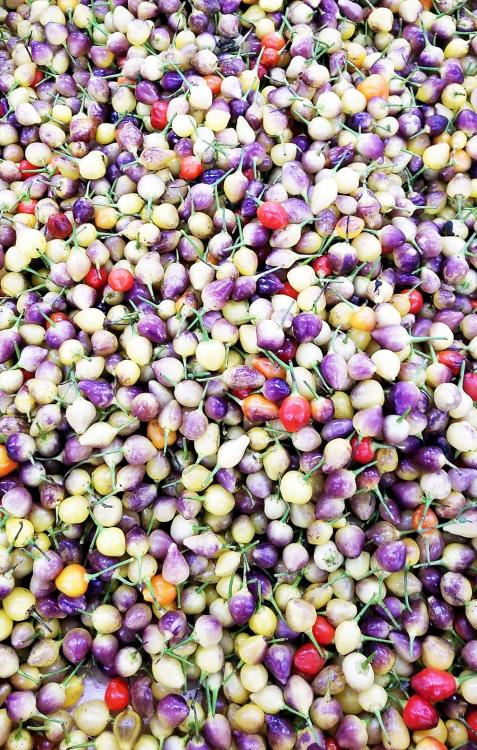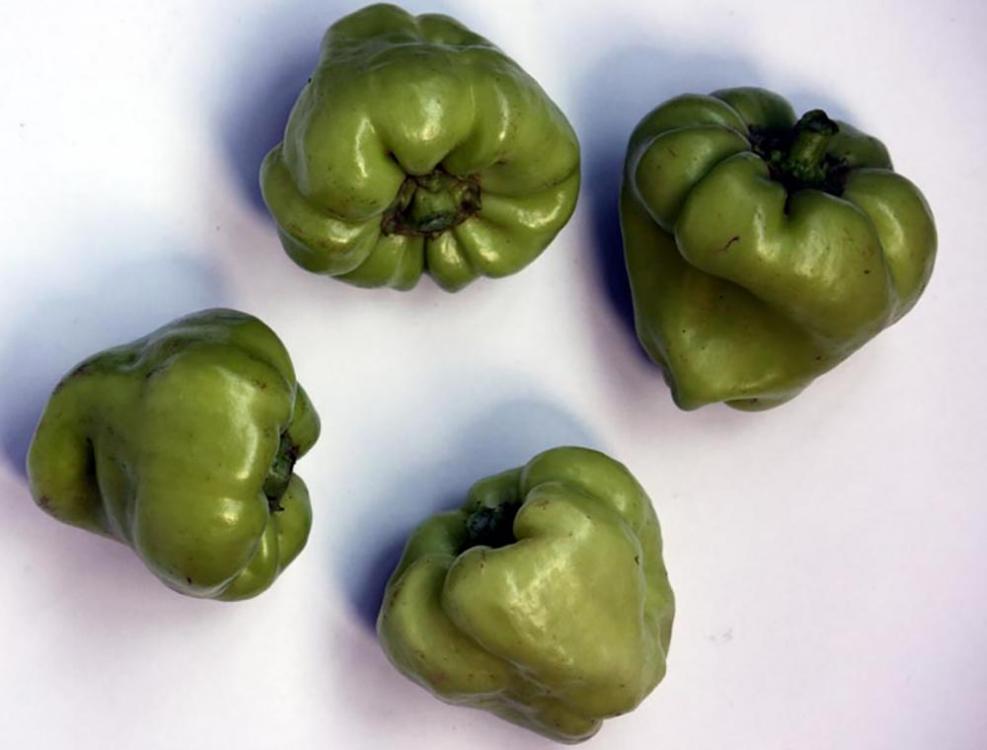18. 辣椒 (là jiāo) – Chilli – Capsicum
Let’s get the spelling of the name out of the way for a start. ‘Chilli’, ‘chili’ and ‘chile’ are all all acceptable somewhere. I use ‘chilli’ because a) it’s the preferred British English and I am British and b) it is the original romanisation of the Nahuatl ‘chīlli’. Just to confuse things further, the first recorded written use of the word in English (1662) was spelled ‘chille’. It is also spelled ‘chilly’ by some in the Indian subcontinent. It also has no connection to the country, Chile. So no silly arguments, please.
Native to Mexico, the plant was introduced to China by the Portuguese in the 16th century; however, it took a while to catch on, only really becoming popular in the 18th century. Prior to that spicy heat came mostly from white pepper, as is still used for some dishes today. In China today, it is most used in Hunan, Sichuan and Guizhou provinces, as well as northern Guangxi where I am. But, it also turns up in other parts of China. Just less so.
Here and in the named provinces it is the third element of the culinary holy trinity after garlic and ginger (replacing scallions as third in the rest of China). There are many different, specifically Chinese cultivars and they are all sold fresh, crushed, dried, powdered and pickled. Here I will only be dealing with fresh and some dried.
Many chillies here are seasonal so, for today, I will just include what are the more perennial and what is in season now. I will add others and edit as they appear in the market. I am giving the local names out of interest and amusement. Chilli names are notoriously fluid here. One type may even have different names at adjacent market stalls. I have no idea how these may equate to American or other chillies. Looking similar is not enough. I will ignore bell peppers because I always do, for obvious reasons.
So. off to work.
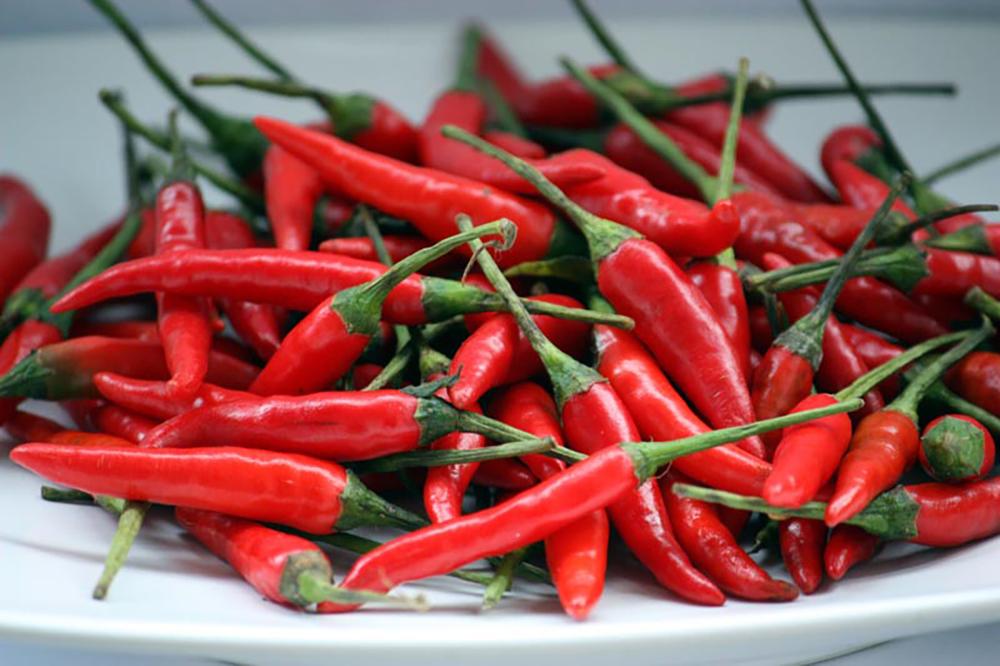
指天椒 (zhǐ tiān jiāo)
Most common are the approximately 7 cm / 3 inch long 朝天椒 (cháo tiān jiāo), ‘facing heaven’ chillies or 指天椒 (zhǐ tiān jiāo), ‘pointing to heaven’ chillies (pictured above), the name coming from the fact that they grow pointing upwards unlike most varieties. They are a cultivar of Capsicum frutescens. There is also a very similar variety called 七星椒 (qī xīng jiāo) or ‘7 star chillies’, named so as they tend to grow in bunches of around seven. These chillies also turn up in their immature green state.
(Note: the Wikipedia page on ‘Facing Heaven Chilis’ is not about these, but a different American variety.)
Facing Heaven Chillies growing in my neighbour’s plot in my countryside home.
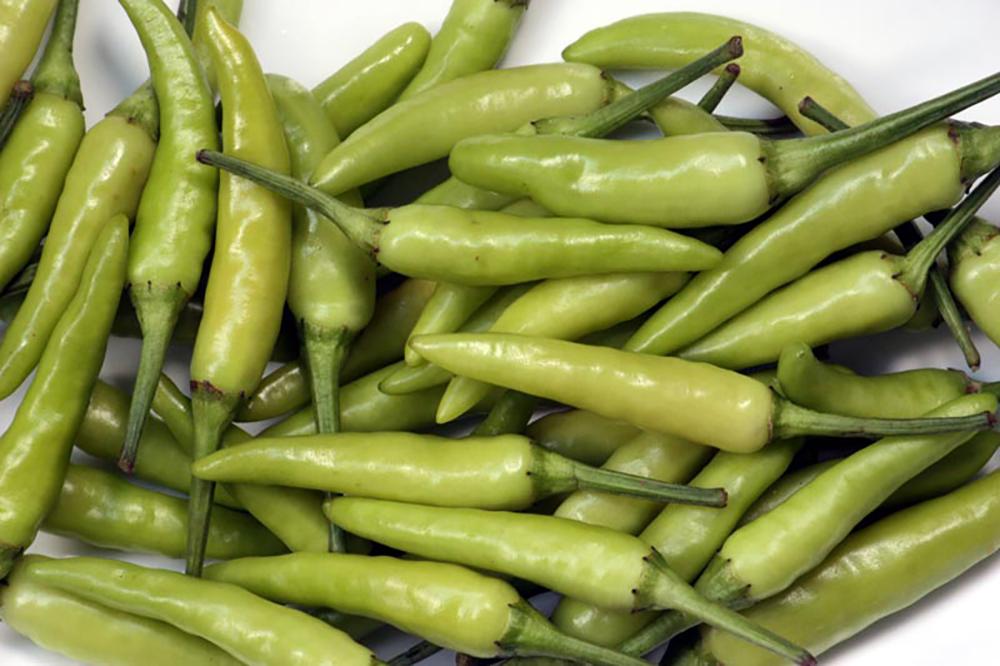
Green Facing Heaven Chillies
These heavenly chillies are sold both fresh and dried; the dried being more commonly used in Sichuan cooking. They are also crushed and powdered. I’d describe them as medium hot. In many Sichuan dishes such as 宫保鸡丁 (gōng bǎo jī dīng), Kung-po chicken and, especially 辣子鸡 (là zi jī), Chicken with Chillies, the chillies are not actually eaten but merely used to flavour and colour the dishes. They are halved and the seeds removed before use.
干指天椒 (gān zhǐ tiān jiāo) - Dried Facing Heaven Chillies
辣子鸡 (là zi jī) - Chicken with Chilli
The same chillies are also considered best for making 红油 (hóng yóu), Sichuanese red chilli oil.
红油 (hóng yóu) - Sichuan Chilli Oil
Next, we have the beautiful people. As everyone knows, beautiful people come in two colours, red and green.
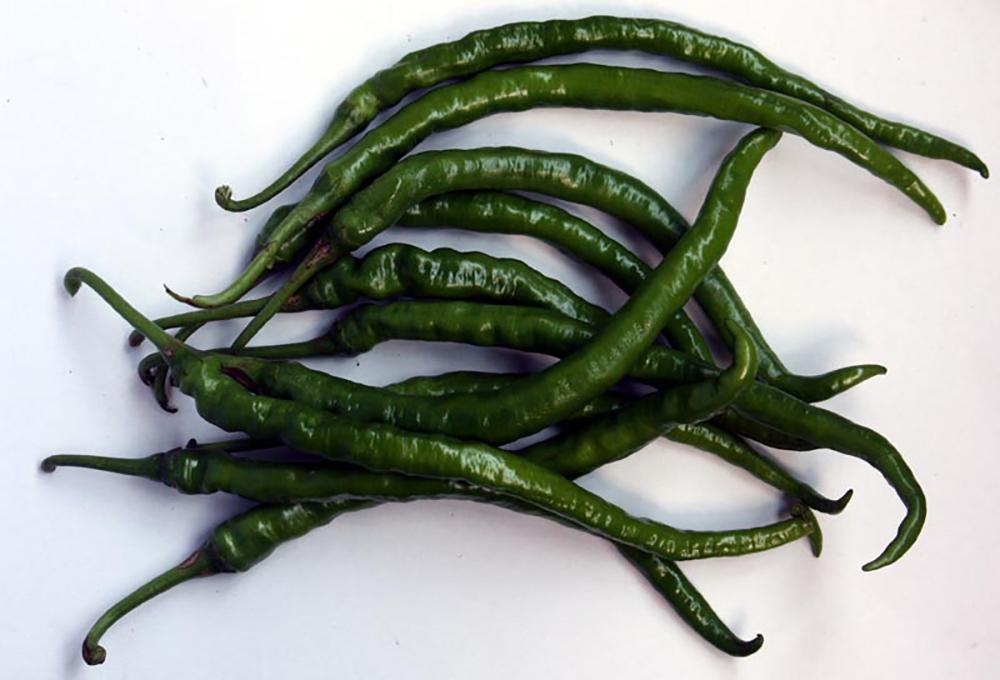
Green beautiful people chillies
青美人椒 (qīng měi rén jiāo) or ‘green beautiful people chilli’ is around 20 cm / 8 inches long, whereas 红美人椒 (hóng měi rén jiāo) ‘red beautiful people chili’ is about 14 cm / 5½ inches. Diameter at the widest is around 2cm / ¾ inch for both.
These can be hot, especially the red, but they are unpredictable. I use these a lot.
Red beautiful people chilllies
Here are the two side by side for size comparison.
Another year round chilli is the 青尖椒 (qīng jiān jiāo) or ‘green pointed chilli’.
青尖椒 (qīng jiān jiāo) or ‘green pointed chilli’.
These big fellows can be 23cm / 9 inches long and have a diameter of around 5cm / 2 inches. The are fairly mild and have a pleasant vegetal flavour, although they can sometimes creep up and hit you! I also use these a lot in 肉夹馍 (ròu jiā mó) and 青椒肉片 (qīng jiāo ròu piàn) a simple but common pork and chilli stir-fry. They are also often stuffed with ground pork and either steamed along with the rice in a rice cooker, or fried. Many supermarkets sell them pre-prepared and ready for you to cook, but I do them myself. I prefer to know what is in my minced / ground pork, thank you!
These next chillies are more seasonal, but the season is now. They are either called 五彩椒 (wǔ cǎi jiāo), five colour chillies or 七彩椒 (qī cǎi jiāo), seven colour chillies, although numbers in both are only approximate. They are sometimes also called 米椒 (mǐ jiāo), literally 'rice chillies', but 米 (mǐ) is often used as an adjective meaning 'small', that being the meaning here. They are about the size of grapes.
五彩椒 (wǔ cǎi jiāo), five colour chillies
七彩椒 (qī cǎi jiāo), seven colour chillies
However many colours there are , these are HOT.
Others that turn up from time time include:
青泡椒 (qīng pào jiāo) Green 'bubble' chillies. This name is a little confusing. 泡椒 (pào jiāo) usually means 'pickled chillies' but these are clearly not pickled. It is another meaning of the same character. They are similar in shape to 灯笼椒 (dēng lóng jiāo) lantern chillies but those are more usually a bit larger and yellow or red. These are not available at the moment. Watch this space.

黄灯笼椒 (huáng dēng lóng jiāo) - Yellow Lantern Chillies
Then there are the 螺丝椒 (luó sī jiāo), literally 'screw chillies'. These are what you may know as 'shishito chillies', the Japanese name. Mild and smoky flavoured. They had these in the market this morning, but I didn't bite. Already have plans.
Finally, for now, we also get these which are called 白辣椒 (bái là jiāo ) which means 'white chili'. They are more white at the beginning of their seasonability, but it's getting late in the summer now, so they tend to be this pale green colour. These are relatively hot. Another one I buy a lot.
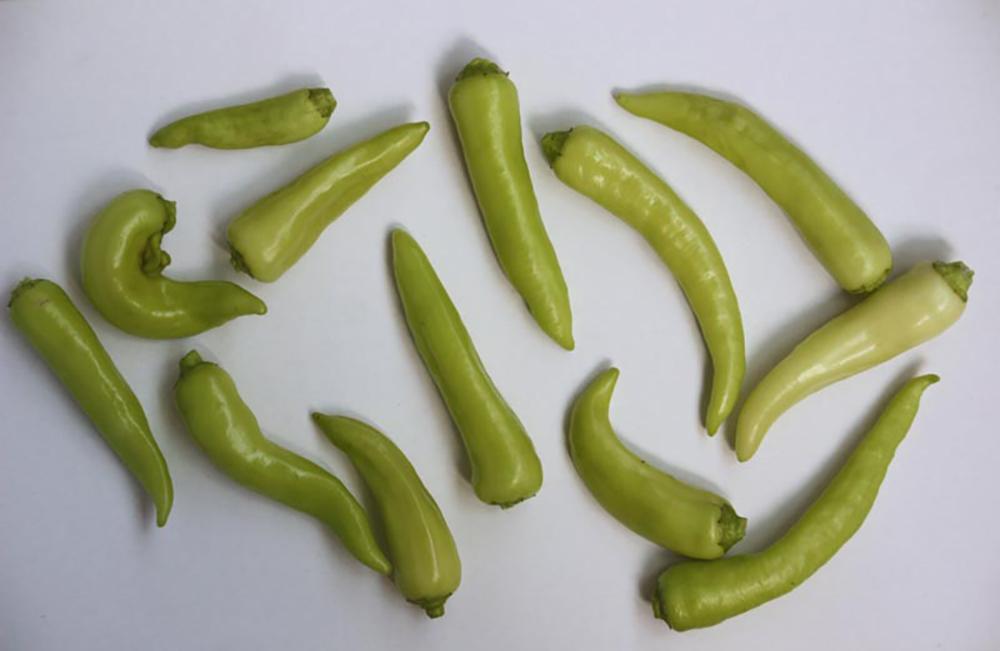
Happy Heat!



